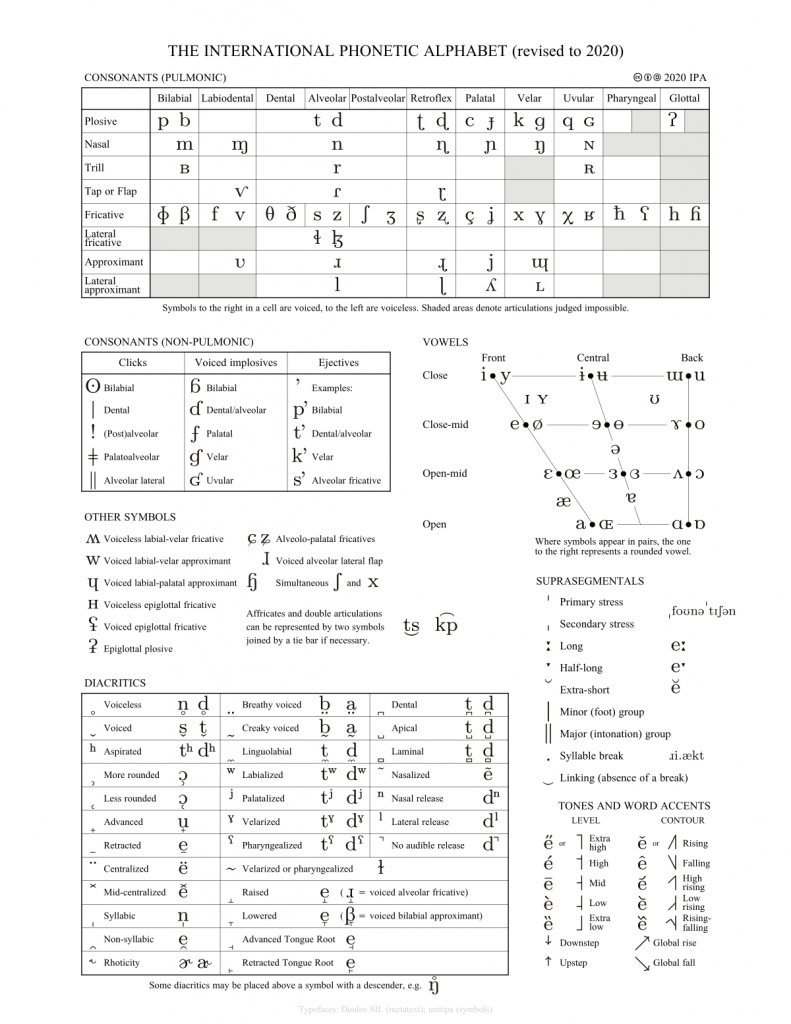I started my second unit, which focuses on the field of Linguistics and its applications, this past week. The question I asked when I started this unit seemingly had a simple answer, but further research revealed the answer to be much more complex. So, what is a word? Words are made up of morphemes, the smallest unit of language with meaning. These morphemes are comprised of phonemes, the smallest distinctive unit of sound. The word “cats” has four phonemes (‘c’, ‘a’, ‘t’, and ‘s’) and two morphemes (‘cat’ and ‘s’). The letter ‘s’ alone is both a phoneme and a morpheme because it has a single sound and signifies a plural meaning. The study of words is called Morphology, a subsection of the larger field of Linguistics. Phonetics and Phonology, also fields within Linguistics, look at speech sounds and their function within language.
One interesting thing I found out about is the International Phonetic Alphabet (IPA). The IPA is a collection of phonemes from across multiple languages represented as unique symbols. These symbols are categorized into two different charts depending on whether they represent consonants or vowels. Symbols are also organized by the manner of articulation, or the way the mouth functions when producing these sounds. There are many technical terms and concepts that I don’t completely understand, but I think this would be an interesting subject to continue studying.

If you want to keep learning about the IPA and articulation, this is a link to the chart with sounds for each symbol.

1 comments
Olivia, this post was so interesting to read, and I think the IPA is fascinating too. I hope the textbook is proving to be helpful!